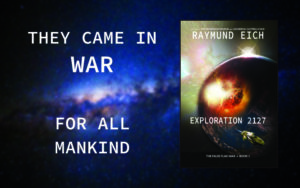More thoughts on a science fiction hardness scale, with a focus on where many of my land on it.
Last time, in A Science Fiction Hardness Scale, I talked about how the Mohs scale can be a helpful metaphor for talking about how hard a science fiction story or novel can be.
In particular, I pointed out that it doesn’t make sense to talk about an author as having one number on the science fiction hardness scale. The analogy is that carbon doesn’t have one Mohs hardness value, but has very different ones depending on its crystal structure: about 2 for graphite vs. 10 for diamond. Science fiction hardness is best thought of as a per-book or per-story value.
My novels and the science fiction hardness scale
The following are my best guess as to where different stories of mine land on the scale. Disagree? Let me know in the comment section.
The False Flag War – 8

The novels with the hardest science fiction content I’ve ever written are The False Flag War duology. Relativistic STL travel with time dilation effects acknowledged in the chapter headings. Data and information lags across interstellar distances. Consideration of how to communicate with alien intelligences a million years or more in the future. Pretty hard stuff.
Hard, but… the time dilation calculations are back of the envelope. I didn’t integrate the Lorentz transform, trust me! And I handwaved some of the challenges Jaeger, McIlroy, and the rest of their team had to overcome to leave the planet in the way shown.
The Confederated Worlds – 7
Any kind of FTL knocks a story or novel out of the upper reaches of the science fiction hardness scale. Even if the FTL is by artificial wormholes.
But the rest of the science in The Confederated Worlds trilogy aims for hardness. No artificial gravity, no reactionless drives. The Ground Force and its foes use projectile weapons, not lasers. And I used some high school trigonometry to figure out the mirror patterns required to give habitatible temperatures to the gas giant moon Arden (in Operation Iago).
The Reincarnation Run and New California – 7
Same reasoning – FTL but without artificial gravity and reactionless drives. I don’t call it out in either book, but the details of the FTL drive in The Reincarnation Run came from me fleshing out the rough concepts of the FTL drive I used when writing New California.
But this points out how a novel’s place on the science fiction hardness scale can depend on how far it details its physics, astronomy, or space content. Even if the FTL drive is the same, I expect most readers find The Reincarnation Run to be harder than New California, solely because in the former, some of the action takes place on a ship making an FTL voyage, whereas in the latter, the action takes place on the titular planet.
That said, New California does have some hard science content. It’s directed to selfish gene theory and brain rewiring instead of physics and astronomy.
Or is the science fiction hardness scale just another term for how much physics and space content is included in a story or novel? I don’t think so, but leave a comment either way.
Azureseas: Cantrell’s War – 6
This one feels softer to me than The Reincarnation Run. The FTL is implied, not shown. The military aspects are similar to The Confederated Worlds trilogy, though there are less of them. Terraforming and bioseeding are in the background but readers can pick up on them.
The primary reason Azureseas: Cantrell’s War feels softer to me is that much of the action takes place in a low-tech community. (Click the link if you want some hints about who lives in that community).
The Incepti Cataclysm – 5
My latest trilogy plays up its space opera roots. The Incepti Cataclysm features FTL, of course, but also artificial gravity and reactionless drives. Though in my defense, I built planetary force fields to deal with Burnside’s Advice about reactionless drives.
More to come
As you probably know, I’ve written more than the eleven novels listed here. I’ll mention some of those and some short stories in a future post. Plus, expect a discussion of why my stories with psi powers are harder than pure fantasy.